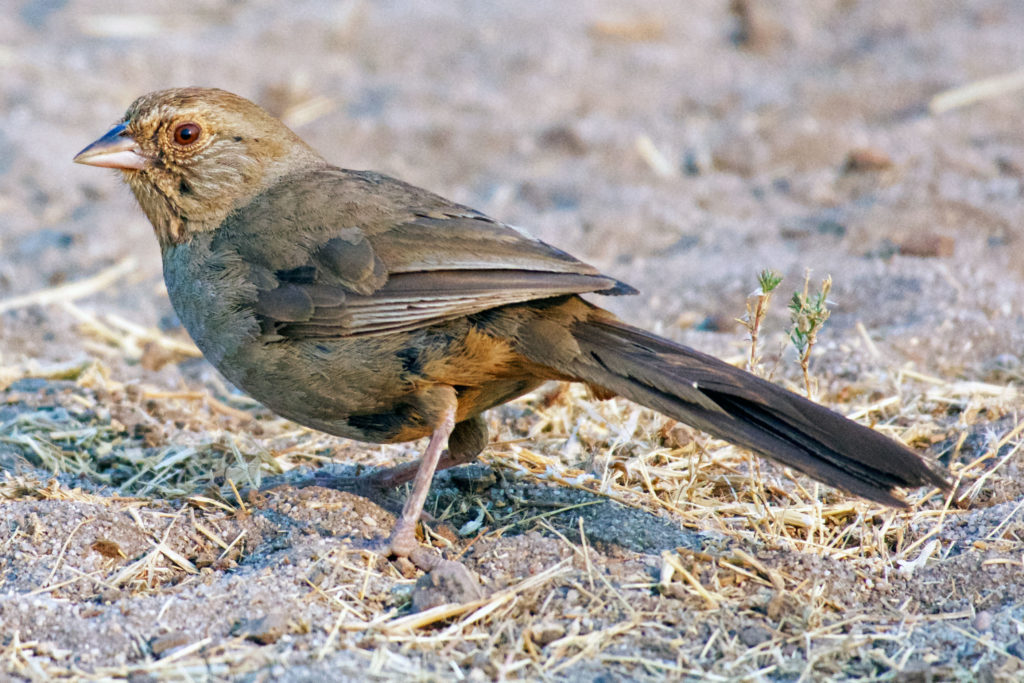One of the more common birds in the hot interior of California is Melozone crissalis, the California Towhee. It’s also one of the plainer birds you’re likely to see, and would be the prototypical LBJ (little brown job), except that it’s larger than most little brown birds. (It’s in the family Emberizidae, which is the American sparrow family, but like most towhees, it’s larger than the typical sparrow.)
One birding site notes that “few birds are as uniformly matte brown as a California Towhee,” although the crissum (the undertail patch) is a sort of cinammon brown instead of the dull brown of the rest of the bird.

If you live near scrubby chapparal in California, you’ll often hear it rustling in the leaf litter, looking for food. If you see it, you might notice the large, conical bill from the picture and this might lead you to suspect that it is a seed eater. You’d be right.
One thing I hadn’t known about it, though, is that it likes poison oak. According to the Cornell Lab of Ornithology, “many towhees build their nests in poison oak and feast on the plant’s copious crops of pale white berries.”
And you know that if a bird eats poison oak berries, it’s gonna spread ’em around. Yay, towhee?
Etymology
The specific epithet, crissalis, refers to the underparts of the bird, the bit between the anus and the tail (the crissum). Presumably the genus name, Melozone, has to do either with the song (from Greek melos, but none of the birds in the genus are particular songsters) or the fact that most of the birds in the genus are brown (from Greek melas, brown). The latter interpretation makes sense, as the group is also known as the “brown towhee” group. Interestingly, until just recently the genus name was Pipilo, to chirp/cheep, which made sense from the vocal point of view.
Here’s a quote from the blog “Earbirding” from back in 2010 when the AOU made this change:
“Brown” Towhees Move to Melozone
Abert’s, Canyon, California, and White-throated Towhees will move from the genus Pipilo to Melozone, where they will join the Rusty-crowned, White-eared, and Prevost’s Ground-Sparrows. This genus split makes sense when you listen to the songs: the “brown” towhees sing with unmusical high-pitched trills and squeals that are very different from the rich, musical series of the “true” towhees.

Yes, people still read blogs. Love your writing, Ben. Thanks for this education about the towhee. My mother would call his coloring shibui